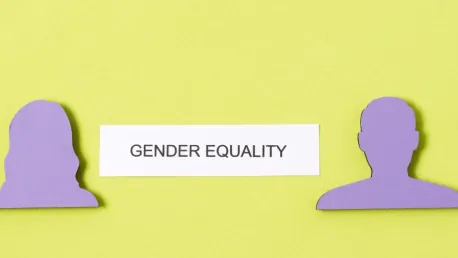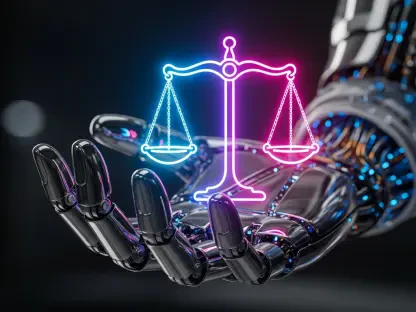The fourth industrial revolution offers a unique opportunity to address long-standing gender disparities by leveraging technological advancements to create an inclusive and equitable future. By examining the historical context of previous industrial revolutions, we can better understand how current technologies might impact global gender equality. The evolution of gender dynamics through various industrial eras reveals both progress and persistent challenges, emphasizing the need for deliberate actions to ensure that women and girls benefit equally in this digitally-driven age.
Historical Context of Gender Inequality
Before the first industrial revolution around the year 1760, societal roles were rigidly gendered, with women, girls, and children often regarded as property. They were consigned to the most labor-intensive tasks, devoid of rights and autonomy. These entrenched inequalities provided a challenging backdrop for subsequent industrial advancements. During the first industrial revolution, advancements such as the mechanization of farm production and the invention of the spinning jenny significantly transformed industries like textiles and agriculture. While these innovations spurred remarkable economic growth, they also deepened gender disparities. Mechanization allowed men to dominate large-scale farming operations, reaping the benefits of improved efficiency and economic gains. Conversely, women remained confined to domestic roles and care work, largely excluded from the economic prosperity generated by these developments.
The mechanization and subsequent technological progress brought about by the first industrial revolution underscored the importance of addressing gender disparities within the framework of economic development. Women were not only denied access to new job opportunities but were also marginalized in the burgeoning public sphere, reaffirming their subservient status. This historical context is crucial in understanding the patterns of gender inequality that persisted through subsequent industrial eras and highlights the necessity of targeted efforts to rectify these imbalances.
Second Industrial Revolution: Technological Advancements and Patriarchy
During the second industrial revolution, which spanned from roughly 1870 to 1914, modern energy sources like electricity led to groundbreaking technological innovations, including lightbulbs, telephones, and airplanes. This period of rapid progress, however, was characterized by heightened patriarchal dominance, granting men increased mobility and influence while exacerbating gender disparities. Despite the transformative potential of these inventions, women were largely excluded from their economic and social benefits, reinforcing existing power imbalances. Wartime needs during World War I catalyzed interesting shifts in societal roles, as women were called upon to replace men in workplaces, filling positions in various industries. This temporary change provided women with unprecedented access to white-collar job opportunities, challenging conventional gender roles. However, upon men’s return from the war, women were often relegated back to lower-paying, less prestigious roles. Additionally, systemic barriers remained in place, preventing women from entering high-paying fields such as medicine, engineering, and law. They continued to be denied voting rights and leadership opportunities, limiting their societal influence.
The second industrial revolution thus presented a paradox of progress and persistent inequality. Technological advancements created new opportunities for economic growth and societal change, yet they also served to reinforce existing gender hierarchies. Women’s contributions during wartime highlighted their capabilities and potential but were not sufficient to dismantle the systemic barriers that restricted their advancement. The era underscores the need for conscious and deliberate efforts to ensure that technological progress benefits all members of society, particularly those historically marginalized.
Individual Achievements Amidst Gender Barriers
Despite the pervasive gender barriers of the time, certain exceptional women made significant strides in various fields, showcasing their potential and resilience. Baroness Bertha von Suttner’s remarkable achievement as the first woman to win the Nobel Peace Prize for her anti-war literature underscored the capacity of women to influence global discourse. Similarly, Marie Skłodowska-Curie’s groundbreaking scientific discoveries, which earned her two Nobel Prizes, highlighted the extraordinary contributions women could make when afforded the opportunity. These individual achievements served as powerful reminders of women’s capabilities, even in the face of systemic obstacles. Suttner and Curie’s accomplishments not only challenged the prevailing societal norms but also laid the groundwork for future generations of women to pursue excellence in their respective fields. Their success illuminated the potential for women’s contributions to be recognized and celebrated, thus advocating for broader societal change.
However, the strides made by these pioneering women were exceptions rather than the norm. Their achievements illustrated the vast potential that could be unlocked if systemic barriers were dismantled and women were granted equal opportunities. The stories of von Suttner and Curie emphasize the importance of creating an environment where women can thrive, leveraging their talents for the collective advancement of society. Such individual achievements amidst persistent gender barriers underscore the need for sustained efforts to ensure that technological progress and societal advancements benefit all, equitably.
Third Industrial Revolution: Progress and Persistent Challenges
The third industrial revolution, which began in the 1950s, introduced transformative technologies such as computers, automated systems, and the internet. This era was marked by a more organized and conscious push for women’s rights, leading to significant progress and recognition of women’s contributions across various domains. Critical milestones included Sirimavo Bandaranaike becoming the world’s first woman prime minister in Sri Lanka in 1960, Indira Gandhi assuming the role of India’s first woman prime minister in 1966, and Margaret Thatcher leading the UK as the first female Prime Minister of a developed country from 1979 to 1990. These achievements signaled a growing acceptance of women’s leadership capabilities and their crucial role in shaping national and international policies. The 1995 World Conference on Women in Beijing was another pivotal event, as it highlighted the global commitment to gender equality. The conference resulted in the development of a 12-point legal framework aimed at achieving gender parity across social, economic, and political spheres. The implementation of the United Nations Millennium Development Goals further emphasized gender mainstreaming as a crucial component of sustainable development initiatives.
Despite these significant strides, challenges persisted. Women continued to face barriers in accessing education, particularly in STEM fields, limiting their ability to participate fully in the digital economy. Health issues such as the HIV epidemic disproportionately affected women and girls, further complicating their pursuit of equality. The third industrial revolution thus represented a period of substantial progress, albeit with numerous hurdles that needed to be overcome.
Achievements and Barriers in the Third Industrial Revolution
Throughout this period, notable gains for women included increased participation in leadership roles and global recognition of their contributions. Achievements such as Wangari Maathai winning the Nobel Peace Prize, Malala Yousafzai receiving the same honor at just 17 years old, and Katie Bouman leading the development of an algorithm for imaging black holes showcased the immense potential of women when given opportunities to excel. These milestones highlighted the critical role women could play in driving innovation and addressing global challenges. Nevertheless, several barriers remained. Gender disparities in education, particularly in access to STEM fields, continued to hinder women’s ability to engage fully with the evolving technological landscape. Health issues such as the HIV epidemic disproportionately affected women and girls, exacerbating existing inequalities and limiting their potential for economic and social advancement. The development and implementation of the United Nations Millennium Development Goals emphasized gender mainstreaming, yet achieving true gender parity remained an ongoing challenge.
The third industrial revolution served as a crucial turning point in the fight for gender equality, illustrating both the progress made and the persistent obstacles that needed to be addressed. The advancements of this era demonstrated the transformative power of technology and societal change, emphasizing the importance of continued efforts to ensure that women could fully benefit from these developments. As we move into the fourth industrial revolution, the lessons learned from this period will be essential in guiding our approach to achieving gender equality in a tech-driven world.
Fourth Industrial Revolution: Opportunities and Challenges
The current era of the fourth industrial revolution is characterized by an intricate blend of digital technologies and the Internet, deeply embedded in every aspect of human life. This simultaneous progression with the third industrial revolution presents a unique opportunity to address longstanding gender disparities and push toward achieving gender equality. However, it also introduces new challenges that must be navigated carefully. One of the most significant setbacks highlighted is the continued underrepresentation of women in tech start-ups. Alarmingly, fewer than two percent of such firms receive investor funding, underscoring a substantial gender gap in entrepreneurial support. Additionally, the COVID-19 pandemic has exacerbated these inequalities, with reports indicating that 50 percent of women were unable to return to their jobs post-pandemic, effectively reversing years of progress in gender equality. These setbacks emphasize the necessity of proactive measures to ensure that women and girls can participate fully in the evolving technological landscape.
While these challenges are daunting, the fourth industrial revolution also offers unprecedented opportunities to leverage new technologies for gender equality. The proliferation of digital tools, artificial intelligence, and the Internet of Things can be harnessed to create more inclusive systems that cater to the needs of both men and women. Intentional efforts are required to close the gender digital divide, ensuring that women have access to the education and resources needed to thrive in this new era. By focusing on equity in tech education, financial independence, and innovative approaches to traditional industries, we can create a more balanced and inclusive future.
Leveraging Technology for Gender Equality
To harness the full potential of the fourth industrial revolution for gender equality, targeted initiatives must be implemented in critical areas such as financial autonomy and non-land-based farming technologies. For instance, only 20 percent of women in Africa currently have bank accounts, significantly limiting their financial independence and ability to engage in economic activities fully. Addressing this disparity will require the development of inclusive financial technologies that provide women with the tools and resources needed to manage their finances effectively. Promoting non-land-based farming technologies can also play a crucial role in empowering women, particularly given that only 15 percent of women globally own farmable land. Innovative agricultural technologies that do not rely on land ownership can provide women with new avenues for economic participation and influence within the sector. Additionally, leveraging technology to report gender-based violence can empower women and girls in vulnerable situations, providing them with direct lines to law enforcement and judicial systems. This technological empowerment can enhance their safety and ensure that their rights are protected.
These targeted initiatives underscore the need for a holistic and inclusive approach to technological advancement. By focusing on areas that directly impact women’s lives, we can create an environment where technology serves as a tool for empowerment rather than exclusion. The fourth industrial revolution holds the promise of transforming societal structures and creating a more equitable and just world for all, but realizing this potential will require deliberate and sustained efforts.
Inclusive Technology for a Gender-Equal Future
The fourth industrial revolution brings a unique chance to tackle long-standing gender inequalities by using technological advancements to foster an inclusive and equitable future. By looking at the historical context of past industrial revolutions, we gain insight into how today’s technologies may influence global gender equality. The progression of gender dynamics across various industrial stages reveals both progress and enduring challenges. This underlines the necessity for intentional actions to guarantee that women and girls reap equal benefits in our digitally-driven age. Understanding these dynamics is crucial for forming policies and initiatives that effectively address gender disparities. The emerging technological landscape has the power to transform gender roles and opportunities, making it essential to ensure women are fully included and empowered in this ongoing digital transformation.









